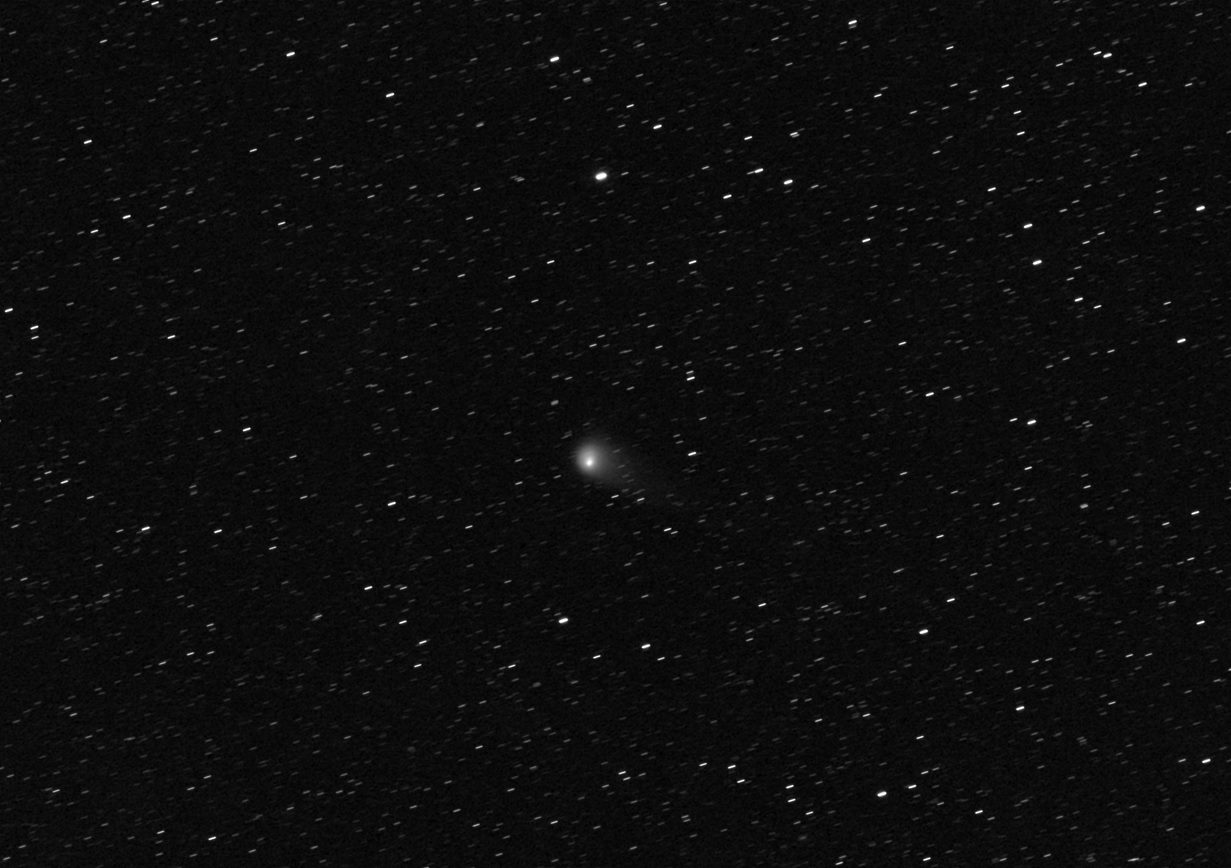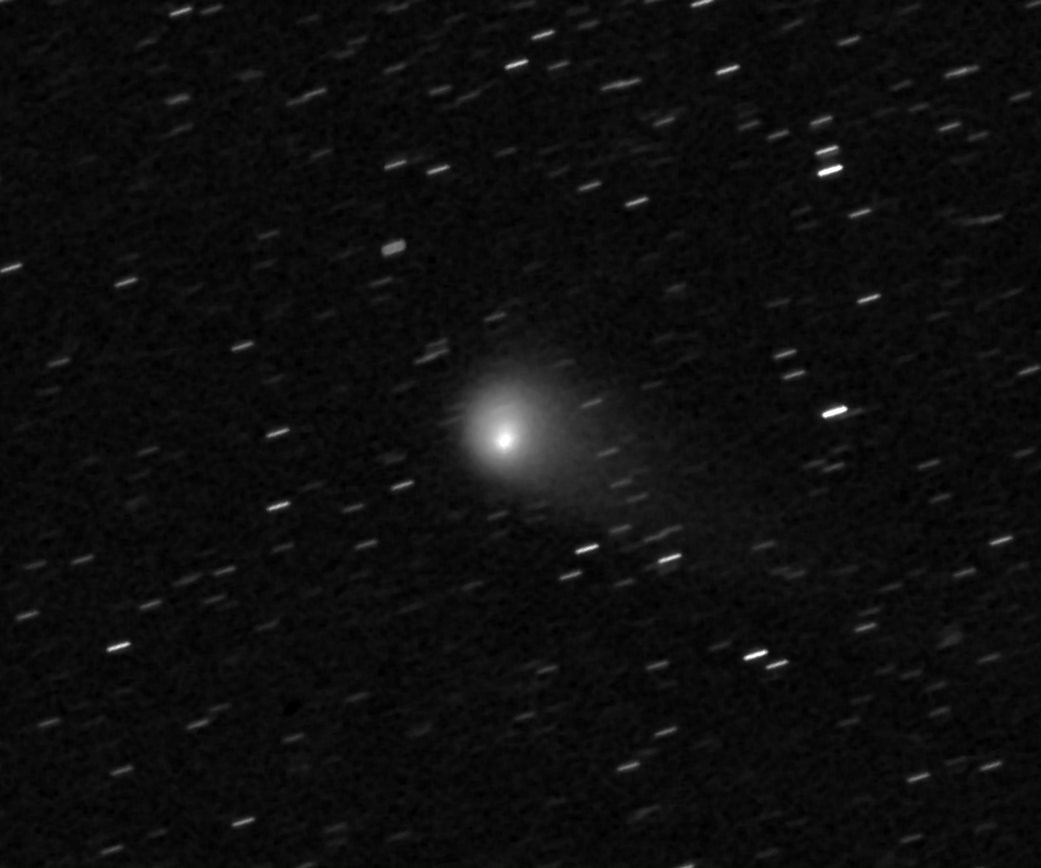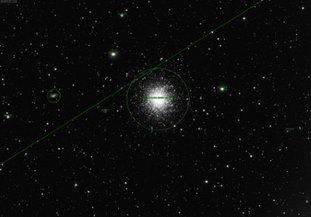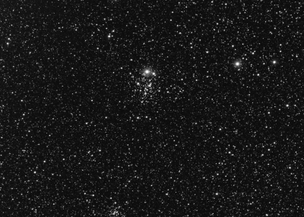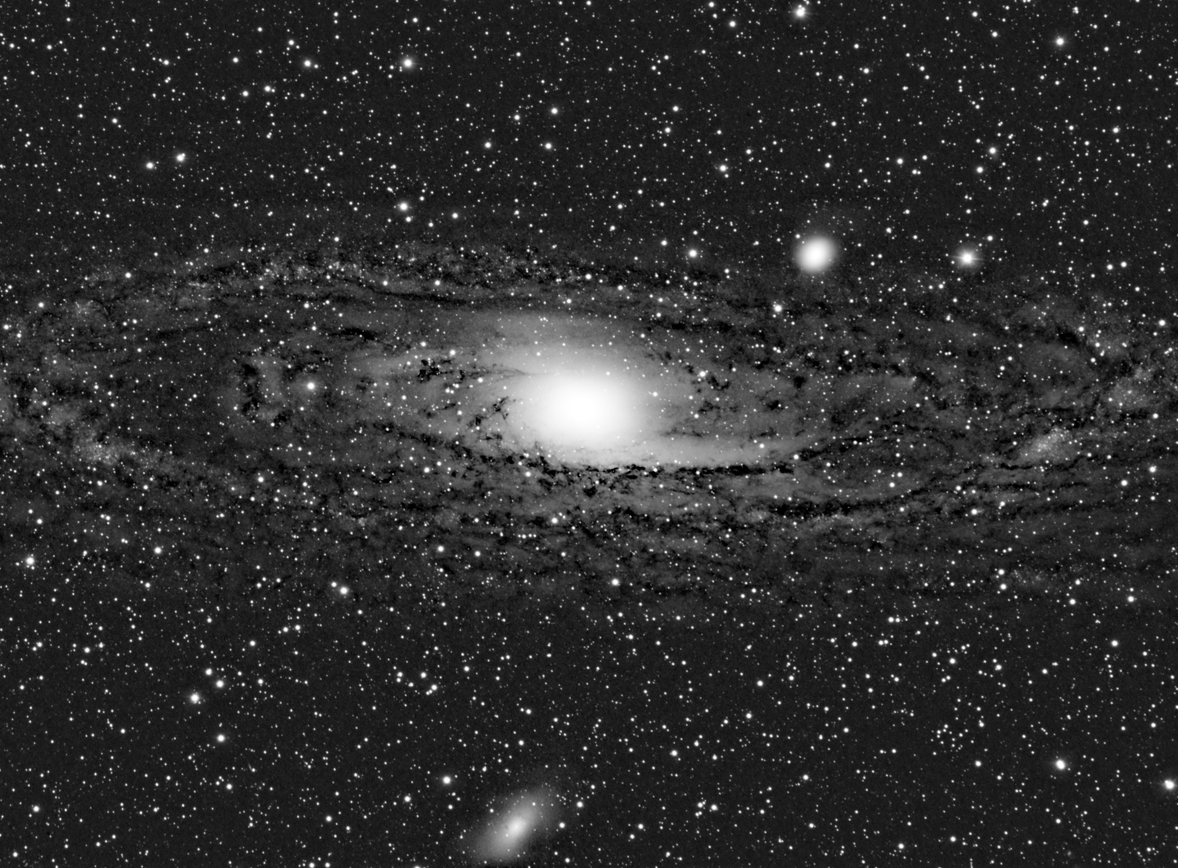The new ALPHA Observatory is already making waves and capturing impressive images of our vast universe. Astronautical Engineering Professor Marcel Mabson with summer intern Julianna Reese have been performing calibration, maintenance, and research with ALPHA, exploring all the amazing things it can do.
Professor Marcel Mabson details the newest views captured by ALPHA below.
ALPHA sees its first comet
On July 14, ALPHA captured Comet C2017K2 at a distance of 270 million km from Earth. The comet is approximately 11 miles in size and will reach perigee (closest approach) by mid-to-late December 2022. The ALPHA team successfully overserved C2017K2 on July 11 and 14, and was able to confirm the comet is in an "outburst" state, meaning that the comet is ejecting material from its icy core. C2017K2 was an interesting object as most comets do not reach an "outburst" state until they are within the inner solar system and at the time, C2017K2 was near the orbit of Jupiter. C2017K2 also holds as the fastest object ALPHA has tracked, moving at a speed of 1.64"/minute or 0.65 degrees of motion per day (that's fast!).
ALPHA sees its first deep sky object
On July 15 and 16, ALPHA saw its first deep sky object: M13 - The Great Hercules Cluster, in the constellation Hercules. The final image captured comprises over 1.5 hours of total image integration, which was made from over 400 individual images over a 3.5-hour window on July 16. Looking at the image, can you spot any other objects? If you look closely, you will see two distance galaxies. NGC-6207 (left of image) is around 30 million light years from Earth and IC-4617 489 (mid-way between M13 and NGC-6207) million light years from Earth.
NGC-457, or The Owl Cluster, is located in the constellation Cassiopeia. A "jewel in a sea of stars", NGC-457 is located within the band of the Milky Way which makes for a very dense star field. NGC-457 is a young cluster, only 21 million years old at 7900 light years distance. This is yet another great example of the wide-field ALPHA provides: at the bottom of the image you see NGC-436 another open cluster.
ALPHA receives its first MPC code
After successfully observing and submitting positional data on over seventeen objects to the Minor Planet Center (MPC), the ALPHA Observatory was provided with its official MPC observatory code: W58. This acknowledgment from MPC validates ALPHA's ability to track objects within tolerance and we can officially begin our nightly sky survey program! ALPHA summer intern Julianna Reese created a plot displaying all target observations: the red line is the ecliptic plane, or the path that the planets follow, and the y-axis displays our elevation (from -90 degree to 90 degrees) with the x-axis displaying azimuth in hours (from 0 to 360 degrees).
ALPHA sees the Andromeda Galaxy
Below is an image of the famous Andromeda Galaxy captured by ALPHA. This is the longest exposure ALPHA has done to date, spanning over 6 nights. Total Exposure time: 5 hours, 25 minutes.
More exciting updates on the ALPHA Observatory will be posted soon!
To read our past ALPHA teaser series posts, click below:
Skywatching with Professor Mabson | ALPHA Teaser Series #1
Orbiting the Unknown │ ALPHA Teaser Series #2
Eyes to the Universe | ALPHA Teaser Series #3
ALPHA Observatory Telescope Building Momentum at Capitol Tech | ALPHA Teaser Series #5
Introducing the New ALPHA Observatory at Capitol Tech!
For more information on our Astronautical Engineering program, view our website or contact admissions atadmissions@captechu.edu



